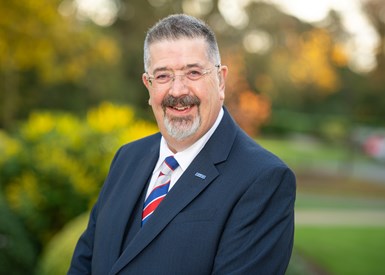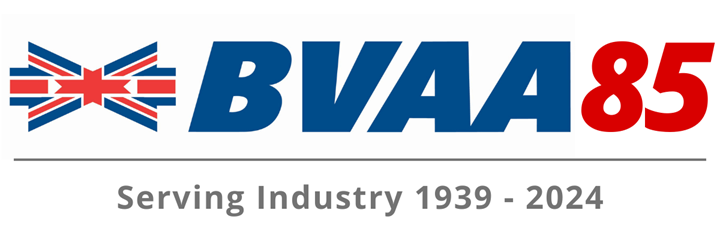Standards Spotlight: Shoot the Breeze
The British Valve and Actuator Association, VMA’s complement in the UK, is the voice of our industry “across the pond.”
#VMAnews #standards

I’m sure every ‘Brit’ who has travelled to the USA has, due to their accent, an anecdote or two about being mistaken as coming from somewhere else … I was once asked if I was both Scottish and Australian on the same day, and famously in an Amero-German diner if I was Swedish! My colleagues found this hilarious, and promptly rechristened me ‘Bo Bartlettson’ for the rest of the trip!
However, the old trope about the UK and the U.S. being ‘two nations divided by a common language’ is, I believe, quite wrong. In over 30 years of foreign travel on association business, I have consistently found completely the opposite to be true. There’s a natural affiliation between our two great nations that inevitably leads us to seek out each other’s company, to socialise and to work cooperatively together.
Brexit
That natural cordiality really pays off when it comes to finding out what’s going on with standards, regulation and governance. The UK has formed a bridge between the U.S. and Europe for generations, and I know that ‘Brexit’ caused real concern over the pond, even up to to the presidential level.
In truth, it’s been every bit as taxing for us Brits in industry, and I have to say badly handled by our government, with legislation often being a very long way behind rushed policy, with confusion and lack of clarity consistently reigning supreme.
BVAA’s technical team applied extensive effort in examining, interpreting and critiquing the proposed UK-centric legislation, which often affected far more, far more deeply, than anyone at first realised. Mercifully, after a great deal of lobbying, consultation and, it has to be said, government backtracking, we seem to have been largely successful and are limping back to our close alignment with Europe when it comes to legislation and conformity assessment. There is still some risk of divergence, of course, but this may all change again with the next administration.
PFAS
Of interest to both our associations — the BVAA and the VMA — has been the European Union’s proposed ban on PFAS materials, used widely for sealing purposes. Ill-considered and badly conceived, with no real alternative materials on the horizon for some critical applications, there’s been a huge backlash from industry, with many of the most vociferous comments coming from the European countries that proposed the ban in the first place. There’s been a massive response to the consultation — some 5,600 comments delivered to the EHCA by the September deadline. The original target dates for ‘final opinion’ are thought likely to be missed, which at least implies rightful due diligence on the mountainous comments. While some measures are no doubt required to remove unnecessary and gratuitous use, and to manage end-of-life care, a real fear is that all European legislation on PFAS will do is drive production outside the continent to places with far less concern about damaging the environment.
Carbon Border Adjustment Mechanism (CBAM)
Again, an emerging issue, CBAM is part of the EU’s strategy to reduce greenhouse gases and global warming and aimed at stopping carbon ‘leakage,’ for example, the offshoring of emissions. We've been advising our members on how CBAM declarations would work, what needs to be reported and the timescales for the regulations. Valves it appears are to be covered, and there’s a strong likelihood of a UK CBAM being introduced by 2027. Still embryonic, it seems this will place yet another burden on businesses and our international competitiveness, as well as reverberating around the globe.
Standardisation
The membership makeup of the BVAA and VMA are very similar, with branches of the same businesses actively involved with us on both sides of the pond. Historically, ISO and CEN standards were a focus over here for many years, especially when we were aligning ourselves with the EU. Increasingly API, ASM and lately IOGP overlays have become core topics for our technical committees. It’s been a delight to work closely with our colleagues in API especially, and indeed the BVAA has been honoured to host API meetings on two occasions at our UK headquarters in recent years, with an open invitation to do so again.
A recent development over here is the CEN PED (Pressure Equipment Directive) Standardisation Request, which identifies 31 valve industry standards in need of review over the next 5 years. Ostensibly the revisions are intended to give better references to Harmonised Standards, Normative References and Annex ZAs. However, as anyone knows in the standards game, in reality it generally becomes open season on the standards’ content.
Although this package constitutes a considerable workload, it’s also an opportunity for engineers new to standards, or EN standards especially, to get involved and create specifications that are state-of-the-art and sympathetic to their company’s products. ‘Why should I care if I’m not European?’ you might be thinking? Well, the Vienna Agreement allows certain CEN and ISO standards to become dual-published and carry the same number, and indeed many of them go on to do so. My strong advice is if you have a UK office, have someone technical get involved via their BVAA membership. It will pay dividends in the long run, and foster cooperation with our two associations via our very special relationship.
For more information, or if you would like ‘shoot the breeze’ with BVAA, contact us on +44(0)1295 221270 or enquiry@bvaa.org.uk.

Editor’s note: In deference to our esteemed colleague, we have left the author’s UK spellings in this article as originally submitted.
A condensed version of this article ran in the Spring 2024 issue of Valve on page 10.
RELATED CONTENT
-
Editor's Product Picks
Neles introduces valve-sizing and selection software for all intelligent automated process valves.
-
Standards for Actuator/Gearbox Flanges
“Many variations in valve and actuator dimensions and characteristics have come into play especially now that we have worldwide vendors,” said Paul Souza, training manager at AUMA Actuators in a presentation at the Valve Manufacturers Association Virtual Valve Forum in November 2020.
-
An Interview with VMA's New Board Chairman
At VMA’s 83rd Annual Meeting, Ron Warren, President and COO of Bray International Inc., was elected the board chairman of VMA for the next year.










 Unloading large gate valve.jpg;maxWidth=214)